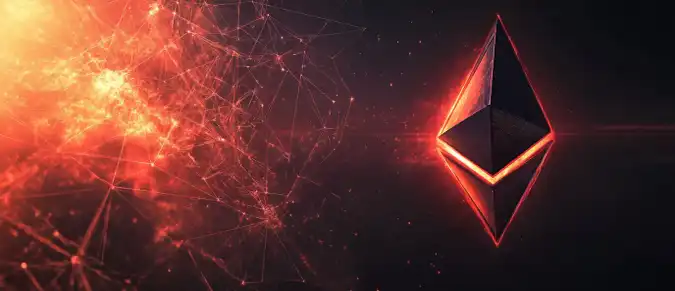In the world of blockchain technology, new projects are emerging that focus on enhancing performance, scalability, and interoperability across various networks. Eclipse is a modular blockchain that unites Solana and Ethereum to provide developers with unique opportunities to create and operate decentralized applications (dApps). Eclipse utilizes the Solana Virtual Machine (SVM) for executing smart contracts, creating a platform capable of supporting high-load applications and ensuring scalability.
Contents:
- Introduction to the Eclipse Project
- Architecture and Features of Eclipse
- Integration of Solana Virtual Machine (SVM) into Eclipse
- Benefits for Developers and Users
- Funding and Partnerships
- Future Plans and Project Development

Introduction to the Eclipse Project
Eclipse is a modular blockchain project designed to combine the performance of Solana with the Ethereum ecosystem. It is positioned as a Layer 2 solution on Ethereum, offering a new approach for creating and launching scalable and high-performance decentralized applications (dApps). Eclipse uses the Solana Virtual Machine (SVM) for executing smart contracts, allowing it to combine the high throughput and transaction speed characteristic of Solana with the security and liquidity of Ethereum.
The project aims to address the challenges of low performance and high transaction costs, which remain significant barriers to widespread blockchain adoption. By merging the capabilities of these two leading blockchain networks, Eclipse offers an optimized and flexible solution for developers focused on building high-load applications. This approach gives Eclipse a unique advantage among existing Layer 2 solutions, making it a promising player in the blockchain technology world.
Architecture and Features of Eclipse
The architecture of Eclipse is based on a modular approach that divides blockchain functions into key components: execution, consensus, data availability, and computation. This division of tasks optimizes each system element, ensuring high performance and resilience to load. Eclipse utilizes the Solana Virtual Machine (SVM) as the execution environment, providing high transaction processing speed and enhanced throughput. For data availability, Eclipse is integrated with Celestia, a specialized network for data storage and distribution.
Key technical characteristics of the project are presented below for convenience:
| Characteristic | Description |
|---|---|
| Execution | Solana Virtual Machine (SVM) for high throughput and low latency |
| Data Availability | Celestia for reliable data storage and transmission |
| Compatibility | Full compatibility with Ethereum tools and standards |
| Transaction Fees | Reduced costs thanks to optimized architecture |
| Mainnet | Mainnet launch planned for Q2 2024; testnet and devnet versions available for testing |
Using Ethereum as the consensus layer ensures the security and reliability of the entire ecosystem. This carefully crafted architectural approach makes Eclipse one of the most promising Layer 2 solutions, capable of delivering both high performance and reliability.
Integration of Solana Virtual Machine (SVM) into Eclipse
The key feature of Eclipse is the integration of the Solana Virtual Machine (SVM) within the Ethereum network. This integration allows developers to leverage SVM's power and performance without leaving the Ethereum ecosystem. Solana Virtual Machine is known for handling thousands of transactions per second with minimal delays, making it attractive for high-load applications such as gaming dApps and DeFi platforms.
Additionally, SVM supports the Rust programming language, known for its high performance and ease in developing scalable smart contracts. Rust support enables developers to adapt their applications for Eclipse without losing compatibility with Ethereum tools and standards. This feature makes the project appealing to a wide range of developers, opening new opportunities for creating complex and high-performance dApps.
Benefits for Developers and Users
Eclipse provides unique benefits for both developers and end-users. First, the high performance achieved through SVM ensures reliable and fast transaction processing, especially critical for projects with high throughput requirements. Second, the project offers full compatibility with the Ethereum ecosystem, allowing existing standards and tools to be used for creating and migrating applications.
Additional advantages include:
- Scalability: The modular architecture allows for easy adaptation to growing requirements and effective scaling.
- Low transaction fees: Eclipse optimizes transactions, reducing operational costs, making it more accessible for users.
- Flexibility for developers: SVM integration and Rust support simplify the development process, creating an environment convenient for building and optimizing dApps.
These advantages make Eclipse attractive for startups in need of a scalable and affordable solution for application development, as well as for end-users seeking reliable and high-performance blockchain-based services.
Funding and Partnerships
Eclipse has already attracted the attention of major investors, confirming its significance and potential in the blockchain market. In March 2024, the project completed a Series A funding round, raising $50 million. Leading investors included Placeholder and Hack VC, as well as firms such as Polychain Capital, Delphi Digital, Maven 11, DBA, and Fenbushi Capital. The project's total funding reached $65 million, enabling active infrastructure development and new specialist recruitment.
Partnerships with projects like Celestia and Polygon strengthen Eclipse's position. These partnerships help ensure compatibility and data availability, expanding Eclipse's integration with other networks. This approach allows not only to expand the ecosystem but also to enhance the project's functional capabilities, making it beneficial for a wide range of users and partners.
Future Plans and Project Development
The Eclipse team aims to launch the mainnet in the second quarter of 2024. Currently, devnet and testnet versions of the protocol are available, allowing developers to test the system's capabilities and adapt their dApps. Projects such as Rarible, Pyth Network, and Solend are already testing on the platform, evaluating Eclipse's infrastructure for performance and efficiency.
In the future, Eclipse plans to host developer events, such as hackathons and accelerator programs, to attract new participants to the ecosystem. The project also intends to continue integrating with other blockchains, providing even more opportunities for creating scalable applications. Eclipse has the potential to become a significant player in the blockchain world by combining the best of Solana and Ethereum to address the industry's current challenges.




